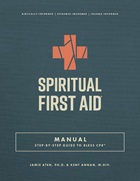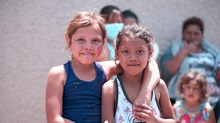Reopening Your Church Ministry: Reset, Reconnect, and Reignite

You may be wondering how your local church can best bounce back from this time of crisis. The process of reopening the church to our full capacity is challenging, and many church leaders are getting impatient even as we recognize that timing is critical.
How can you reunite your faith community moving forward with greater participation and involvement? And how will you reach out to your unchurched community and survey their needs? Now is the right time to plan the next few years of your church's ministry.
Reopening your church with a simple, strategic plan is essential. I will briefly suggest three strategic planning steps that can be adapted to fit your church's purpose and vision. Intentional planning will help you increase generosity of time, talent, gifts, service, and witness.
Reset Stewardship
The first area for planning—stewardship—is essential, yet easily neglected, because many people want to avoid the topic of money. In the Lilly School of Philanthropy’s recent survey of church leaders—Faith and Giving in the Time of COVID-19—nearly half of the respondents stated that “stewardship would be their most significant challenge for recovery.” Also noted were the priorities of teaching stewardship and nurturing generosity.
To reset your stewardship ministry, begin by developing your strategic financial recovery plan. Audit your previous annual giving as well as your total giving over the last three to five years. Reset your revised annual giving needs and goals. Monitor your current giving and budget needs every three to six months. Being flexible is vital.
Base all you do on the needs of your congregation. You may want to first survey your congregation’s needs. During this financial recession, also consider developing an effective stewardship sermon series and campaign with this theme: “Reset: Biblical Wisdom for Challenging Economic Times” (see page 71 of my first book, Propel: Good Stewardship, GreaterGenerosity).
Many churches have pulled together a COVID-19 Leadership Team. Your leadership team will want to consider making financial education a priority. Teaching digital giving models can be magnetic to growth in giving. In 2008, our church began programs to teach new methods for personal financial management. Classes focused on eliminating debt, which is essential for recovery. I had expected 15 attendees, but over 150 people registered for each financial stewardship class.
Reconnect with Small Groups
Isolation has taken a toll on all of us, and many people want to return to church. Despite this, you may observe a reluctance and fear as you reopen your church ministries. Be aware that most people have some level of anxiety and/or ambivalence about returning to in-person services. Begin by inviting people to small groups or classes; it may be the safest approach, and can also be a dynamic evangelistic and reconnecting model.
Small group ministry can help you reconnect and bring people together to experience healing from trauma and practical help for financial recovery. For nearly 25 years as a lead pastor, I led crisis recovery groups for people going through trauma due to death, divorce, or unemployment. Our church's small group ministry also became known as a growing, caring, and healing ministry in our faith community. Your small group ministry can greatly impact your wider community. Your church, when ready, can offer new or existing groups or classes. Trauma recovery is hard work and small group ministry will make it happen. Advance promotion of these recovery groups may attract members and people from your community to attend.
In 2019, Matt Schoenfeld and I wrote Growing Through Disaster: Tools for Financial and Trauma Recovery in Your Faith Community. Little did we know that a world-wide pandemic would soon cripple us with crisis. Today, there is even a greater urgency for your church to reach out to the wider community and reconnect with recovery groups. This book first offers six chapters of faith-based recovery content, while the last six chapters are small-group lesson plans based on the topics of earlier chapters. Also provided are promotion plans, leadership training, and many other tools and practical resources. The book is also designed to help recruit and train volunteer group facilitators to better serve those in need.
Reignite Resilience
In my research for writing our new faith-based book, Growing ThroughDisaster, I discovered a testimony-based recovery website: www.joplinmo.org/joplinpaysitforward.
Our church, like hundreds of others, rushed to help the Joplin, Missouri community, which was destroyed by a devastating F5 tornado that took 161 lives in 2011. In the first year of recovery, resiliency became evident as stronger ties of community and church leaders developed. From visiting and interviewing the resilient Joplin leaders, I learned these keys to reigniting resilience:
- Positive, but realistic, approach
- Ability to set financial recovery-based goals
- Hope and trust in God and one another
- Networks of supportive community and church leaders
- Christian organizations offering great impact
I believe that most of our faith communities can and will recover from the pandemic disaster. Some churches will even grow stronger through faith-based leadership. Yet, we need to be careful to observe disaster distress. The impact of emotional fatigue on pastors and leaders needs ongoing attention.
What will your faith community look like in the months and years ahead? I believe this crisis creates a defining moment of opportunity for spiritual growth for you and your church leaders. By taking an intentional approach to strategic planning to reset, reconnect, and reignite, we can grow resilient in faith, hope, and love through times of disaster.
“But those who hope in the Lord will renew their strength.” Isaiah 40:31a
This post originally appeared at reopeningthechurch.com.
Rev. Dr. Clayton L. Smith has published three books, numerous articles, and blogs. In his retirement he is available as a conference speaker, webinar facilitator, and workshop leader. Clayton enjoys travel, gardening, reading, writing, and family time. Lori and Clayton have four children, three grandchildren, horses, dogs, and cats. In retirement, he is best known as a preacher/teacher, storyteller, group facilitator, coach, and consultant. Pastor Smith graduated from Central Methodist University, Perkins School of Theology, and McCormick Theological Seminary.
The Better Samaritan is a part of CT's
Blog Forum. Support the work of CT.
Subscribe and get one year free.
The views of the blogger do not necessarily reflect those of Christianity Today.






















